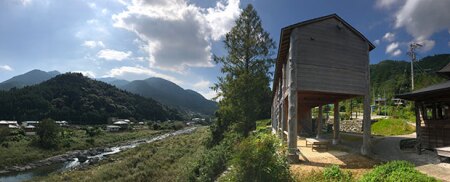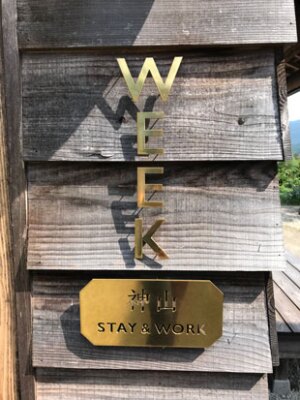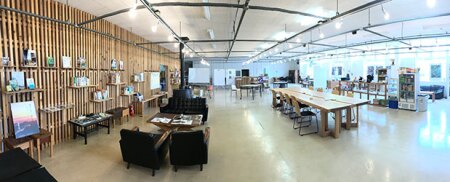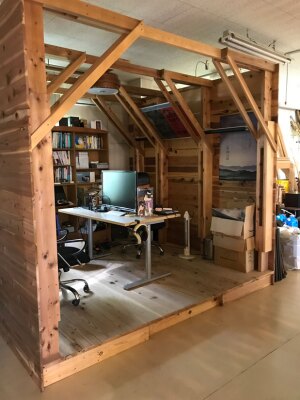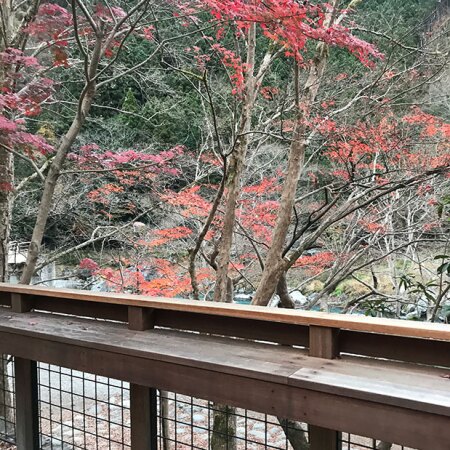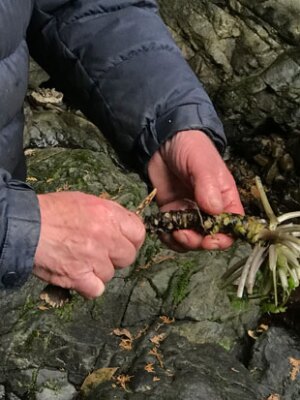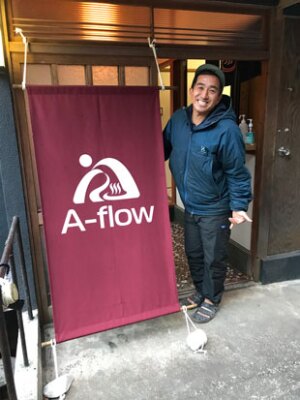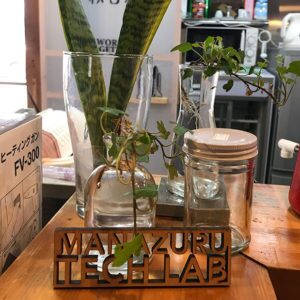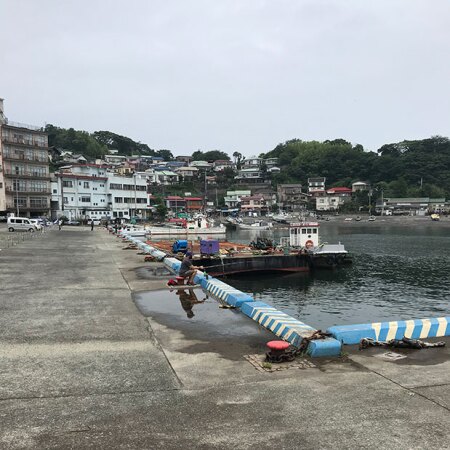The pandemic has changed how many people work, and where. For those fortunate enough to be able to work remotely, “workations” have emerged as a blend of remote work and leisure outside the confines of a home office. While some workation destinations are more urban, the practice in Japan takes on a more bucolic flavor that solves two problems: for workers, an alternative to diminutive urban apartments, few of which have dedicated home office space; for regional and rural municipalities at the frontiers of Japan’s aging and declining population, workations offer revenue and sought-after potential new residents.
A workation in Japan is a remote work arrangement with elements of a retreat, a dose of nature, and perhaps a taste of small-town life mixed in. Traditional hot springs (onsen) are converting to workation destinations in the absence of tourists, as are some Buddhist temples, where workations run on a monastic schedule that includes early-morning meditation sessions. Even national parks in Japan are building out the infrastructure to support remote workers.
When the Japanese government declared its first COVID-19-related state of emergency in April 2020, firms initially struggled to implement telework, hampered by insufficient technology and rigid bureaucratic procedures, such as the use of personal seals to sign documents (in late 2020, Japan abandoned these in 99 percent of official transactions). Japan’s corporate culture—known for its punishing hours and long commutes—has also resisted telework. Participation in 2021 hovers around 20 percent, far below the government’s 70 percent target.
For remote workers, Japan’s urban housing stock presents a constraint. In Tokyo Prefecture, the average dwelling space (kitchen, sleeping, and lounge areas) measures 41 square meters (441 square feet), and 20 percent of Tokyo’s 6.8 million households live in apartments that are 19.7 square meters (212 square feet) or less. Small children and a partner can quickly render quiet or privacy a rare and valued commodity. Workations therefore offer a reprieve, with implications far larger than tiny Tokyo flats.
Greater Tokyo constitutes the world’s biggest urban agglomeration, home to 38 million people in 2020 and 30 percent of the Japanese population. For centuries, the capital has occupied a commanding position at the center of national narratives: all roads and many hopes for education, professional success, and political influence lead there. The countryside is not synonymous with professional success, but workations may be changing this. As a result, many local governments are enthusiastically leaning into workationing and its variants, like satellite office development. Three municipalities offer illustrative examples.
Kamiyama, Tokushima Prefecture
Kamiyama is a town of 4,700 in a river valley tucked into the hills of eastern Shikoku, the smallest of Japan’s four main islands. Its population peaked in 1955 at 21,000, when forestry was its main industry. Since then, Kamiyama’s population has aged and declined, like that of most of rural Japan.
Kamiyama’s commitment to “creative depopulation” has earned it national recognition as a pioneer in regional revitalization. Local nonprofit Green Valley helms those efforts, and for two decades it has worked closely with Kamiyama’s mayor and municipal government. One of their joint projects is a repurposed textile factory that now serves as the Kamiyama Valley Satellite Office Project, a well-appointed coworking space with a woodshop, high-speed internet access, and meeting space among work areas of various sizes. A small hotel across the street overlooks the town’s picturesque river.
Some companies have invested in their own satellite offices. SanSan, a Tokyo tech firm that develops contact management software, worked with Green Valley to rent an 80-year-old Japanese home from a local family, complete with an adjoining cowshed or ushigoya featuring exposed wooden beams and traditional straw and mud walls. While the home was vacant (an akiya), the owner was initially concerned about converting it into an office, but as a trusted local organization, Green Valley was able to act as an intermediary. After almost a decade of renting, SanSan bought the home in 2020. One staffer works there permanently, but the facility is open to any of the company’s more than 700 employees. SanSan encourages workations by sponsoring travel costs and allowing employees to use the house as vacation lodging for accompanying family members. On a busy day, 30 people can share the space; and today, the cowshed has additional structural support, glass walls over the original mud and straw, air conditioning, and a heated floor.
Other companies have renovated old storehouses or started spin-off initiatives, like the food hub developed and cofunded by website design firm Monosasu. While many shrinking municipalities have established websites and programs to market vacant homes to potential newcomers for residential use, the akiya-to-office transformation marks a new way of doing business, and one that many municipalities seek to emulate.
Kamiyama’s pioneering approach to remote work earned it the number-two spot on Forbes Japan’s 2017 list of most innovative municipalities in the country. Mayors come regularly to study Kamiyama’s model, and while the town’s efforts have earned it new residents, its population continues to decline. When asked about the biggest lessons Kamiyama has learned, Green Valley’s remote office coordinator reflected, “It takes time to change.” Kamiyama has a two-decade lead on many other places, and yet that may not ultimately be enough to keep the town viable in the long run. For now, Kamiyama is focused on maintaining livability for locals and visitors alike. Its prefecture, Tokushima, has asked Green Valley to advise on setting up satellite offices elsewhere. Together, they are demonstrating a new model that has the rest of Japan on notice.
Okutama and Ome, Tokyo Prefecture
Ninety minutes west of central Tokyo by train, Ome (population 137,000) is the westernmost city in Tokyo Prefecture. At the end of the line, 30 minutes further up a steep river valley surrounded by mountains, sits the town of Okutama (population 5,000). Ome and Okutama go back centuries, and in recent times, their economies centered on a combination of industry, forestry, and wasabi farming. Despite their proximity to central Tokyo, both are losing population. COVID-19, however, breathed new life into this area over the summer and fall of 2020, when Tokyoites swarmed the area for hiking, biking, whitewater rafting, fishing, and camping. Local businesses had their best season on record with this “Okutama Boom,” as one bike shop owner called it, and they see opportunity: since summer 2020, four workation facilities have opened in rural western Tokyo Prefecture.
A-Flow opened in November 2020 and is located in Ome. The man behind the venture is Daigo Shibata, owner of Mitake Rafting Club and a small guesthouse. A-Flow consists of a newly renovated, formerly vacant two-story building overlooking the Tama River. The Tokyo Metropolitan Government (TMG) has publicized this space and three others in the larger region in an effort to draw city dwellers into the prefecture’s rural hinterland. TMG also inked a contract with A-Flow and these other three workation hubs, through which TMG provided Tokyo residents with subsidized workations. Shibata is excited: “Before COVID, no one talked about workation,” he says, and although A-Flow opened during his slow season, he started hosting retreats almost immediately. He thinks that he has bet right on this new line of business.
Manazuru, Kanagawa Prefecture
Manazuru sits on a small peninsula about 90 minutes southwest of Tokyo by train. Originally a fishing and stone quarrying center, it saw its population begin to decline in 1970 from a peak of 10,300 to about 7,000 today. For several years, Manazuru has marketed itself as a startup town, with a brand built on relaxation and innovation. It hosts a Creators Camp for tech professionals and encourages remote office development. One startup founder with ties to Kamiyama built a workation complex out of several vacant beachside homes, and a host of smaller facilities dot the town. At least six firms have set up shop in Manazuru since the city initiated this effort.
The town government is leading Manazuru’s revitalization efforts, and prioritizes building partnerships with private firms. Notably, because it emphasizes these personal connections, Manazuru does not offer prospective companies a direct cash subsidy to locate there. As staff explain, the town seeks durable partnerships that go beyond yen. Instead, they provide targeted or in-kind investments to support building renovation or new product development. City staff also facilitate introductions to help new companies and their employees connect with residents and the local social infrastructure. The approach has brought several coworking spaces to town, including one that caters to working moms and includes a play area for children.
Among its various investments, Manazuru has turned a vacant sushi restaurant into a Tech Lab, a maker space with attached satellite offices in which members can experiment with everything from screen printing to 3-D printing and cooking up new food products. One aspiring entrepreneur—a database engineer who grew up in Manazuru and recently returned after five years in Tokyo—is trying to evaporate sea salt, and dreams of launching an artisanal salt label. Down the street, other Tech Lab denizens are partnering with an “internet of things” (IoT) company to pilot faster, low-waste shrimp farming. Some spend their mornings fishing and their afternoons working on startups. Because the Tech Lab is not anyone’s primary source of income, the stakes are low and failure is acceptable here, within what Tech Lab denizens call the “Manazuru Republic.” The Lab functions as a gathering space and node for developing the human capital on which Manazuru’s future depends.
In Conclusion
The last year has changed workplace culture, both in Japan and around the world. The question now is: what will stick?
For each of the municipalities profiled here, workations represent a way to boost the local economy, but of equal importance, to create relationships with new people and convince them to return. Depopulating municipalities across Japan refer to this as growing their “related population,” and it is a strategy that many are pursuing. The potential for workations to grow the population, create more businesses, and eventually attract tourists is clear to many a mayor and business owner.
Some young people are going beyond workations to embrace new modes of living and working in the countryside, building lives that represent a complete departure from those of their parents. “The emergence of workations shows the growing awareness in Japan of the importance to rethink existing modes of working and living,” says Dr. Susanne Klien of Hokkaido University, author of a 2019 book on Japan’s urban-rural migrants. “Workations hold great opportunities for the sustainable use of empty houses (akiya) for temporary purposes. On the other hand, they also contain the danger of exploitative work as employees will highly likely be expected to be available 24 hours and it is not clear what is work and what is vacation,” she warns. Workations are not without tension, and beyond Japan’s efforts to navigate the global pandemic, they are indicative of deeper structural changes. Those include a softening of the country’s urban-rural divide, and a sharp contraction in the lifetime employment system. Many who are embracing new lifestyles came of age in the 1990s and 2000s, often called Japan’s “lost decades.” In her book, Dr. Klien notes that “for many members of this post-growth generation, the continuing pressure to sacrifice leisure for a job that is increasingly less secure does not make sense.”
Nevertheless, a number of challenges exist, among them:
- Gender equity. Can workations benefit all workers? In Japan, child care still overwhelmingly falls to women. Public funding for child care is more than in the United States, but less than EU and OECD averages. While waitlists for child care are long in Tokyo and other major cities, the situation is not necessarily better outside the capitol. While some workation spaces make room for children, many do not.
- Infrastructure. High-speed internet is not universally available in rural areas, and while the central government is considering funding approaches, the gap remains a barrier.
- Transportation. Many regional Japanese rail services are operating at a loss. In some areas, they have simply stopped running, or been replaced by buses. Many Japanese urbanites do not have a driver’s license, and ride-sharing services or taxis are not always be available outside metropolitan areas.
Japan has a proven track record of rapidly reinventing itself, pivoting from a feudal society to a modern nation-state in 1868, and then emerging from defeat and widespread destruction in World War II to become an economic powerhouse by the 1980s. Can Japan create a workplace for the 21st century, one that will provide flexibility for family commitments, and open up opportunities and a higher quality of life for all workers, especially women with children? Some are doubtful. For others, workations represent an intriguing step in a potential new direction.
As Japan prepares to host the Paralympics in late August, more than half the country is under some kind of emergency measure, and pandemic-driven uncertainties show no sign of decreasing any time soon. That may slow workations, but it is unlikely to stop them. Indeed, insights about workationing’s relationship to the country’s future may come from an unexpected corner: the water closet. Flush toilets were far from universal in the Japan of the 1970s. Today, Japan has won the Toilet Race by using technology to leapfrog to a more advanced solution, while also reducing dependence on timber. Perhaps COVID-19 can serve as a similar catalyst for a comparable leap—not just for new ways of working, but for regional revitalization, too.

